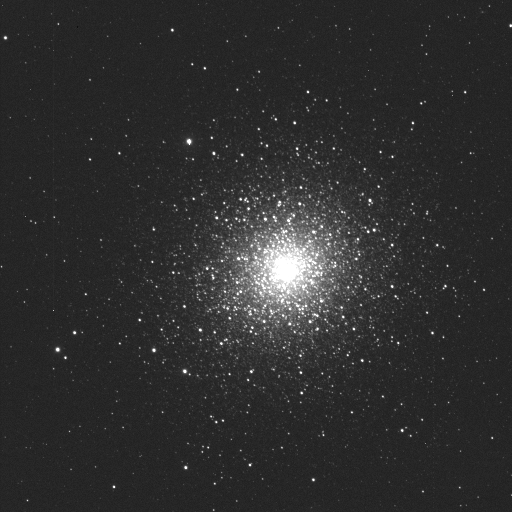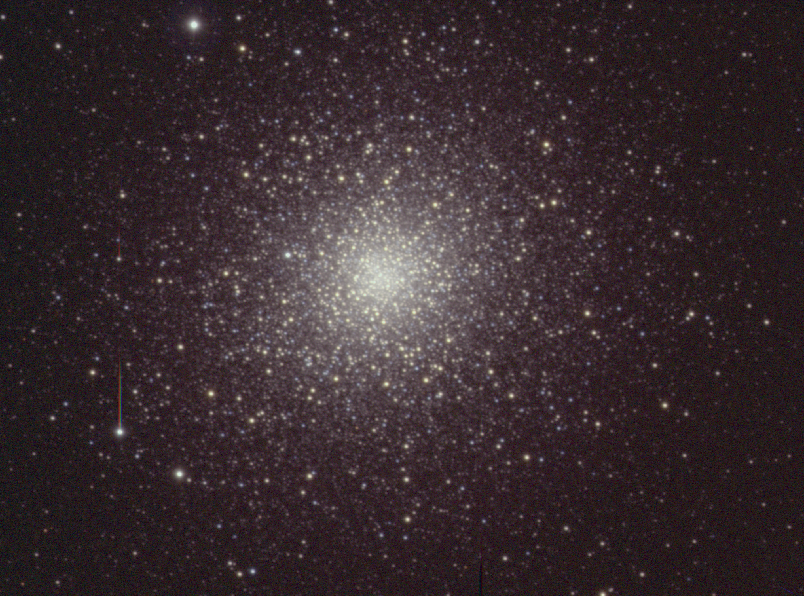

The bright globular cluster Messier 2 (NGC 7089) in Aquarius, shown from a 15-second red-light exposure (through clouds) with a Tektronix 2048x2048 CCD at the prime focus of the 4-meter Mayall telescope of Kitt Peak National Observatory. North is at the top and east to the left, for direct comparison with a chart or eyepiece view. The image has been block-averaged to 512x512 for this presentation, which uses a logarithmic intensity transformation to preserve information across a wide dynamic range. The field is 14.3 arcminutes square.

This image is displayed to show the crowded stars near the cluster center. This BVR composite from September 2017 used data from the 1-meter Jacobus Kapteyn Telescope (JKT) now operated by the SARA consortium on the island of La Palma.
This is one of the brighter globular clusters visible from the northern hemisphere, with a listed magnitude of 6.5 (not to be more specific, that's from the Sky Publishing Messier Card). It is also quite luminous, being located something like 11 kiloparsecs (36,000 light-years) from us. It is unusually elliptical in outline, just detectable on this image (Omega Centauri is still the most obvious case; one of these days I'll get a decent image to put in here).
Last changes: 9/2018 © 2001,2018